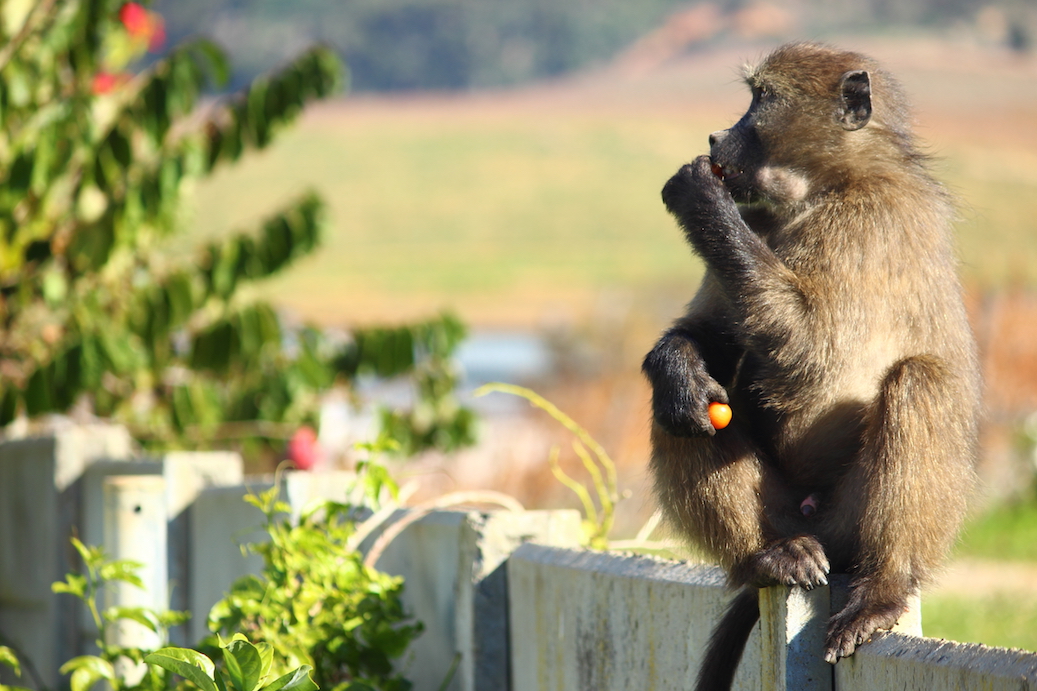
Baboons use stealthy tactics to steal food in cities
Baboons in Cape Town, South Africa are known for entering into urban areas to steal food. Similar to raccoons or even bears in many parts of North America, baboons will look for food wherever they can find it, presenting a real nuisance to Cape Town residents.
A new study, conducted by researchers from Swansea University, showed that the baboons used stealthy tactics to maximize their foraging time in urban areas.
One of the tactics the baboons used is a classic “sit-and-wait,” where they scope out the scene before entering someone’s home.
“Raiding baboons are a real challenge in the Cape Peninsula, South Africa. The baboons enter properties to raid in gardens and bins, but also enter homes and sometimes take food directly from people,” said Justin O’Riain, the co-author of the study.
The reason baboons take such risks is because the food in urban areas has more caloric value and is more plentiful and available.
The researchers note that the food rewards in urban areas are 10 times richer in terms of calories, so for some baboons, it’s well worth the danger.
Even though Cape Town had implemented strategies to keep the baboons away, some male baboons were still able to enter the city and forage.
In order to see how the baboons were succeeding, the researchers built tracking collars and fitted them to ten male baboons.
The researchers then monitored and tracked the baboon’s movements using GPS and accelerometer sensors.
The data from the tracking collars showed that the baboons stayed at the edge of the city and waited awhile before heading in for intense bursts of foraging. The researchers call it a “sit-and-wait” kind of a strategy.
The baboons who risked raiding urban areas also only foraged for about ten percent of their time, much less than baboons who stayed away from the city.
“We suspected the baboons were doing something clever to allow them to minimise the risks associated with urban foraging, and the data collected from the collars confirmed this,” said Dr. Andrew King, the senior author of the study.
—
By Kay Vandette, Earth.com Staff Writer
Image Credit: Dr Gaëlle Fehlmann












